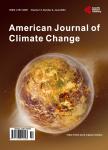Changes in Avian Spring Arrival Dates of 115 Species in the Central Appalachians over 127 Years
Changes in Avian Spring Arrival Dates of 115 Species in the Central Appalachians over 127 Years作者机构:Division of Forestry and Natural Resources West Virginia University Morgantown WV USA Native American Fish and Wildlife Society and the Alaska Climate Adaptation Science Center Fairbanks AK USA West Virginia University Extension Service Morgantown WV USA 818 Great Plains Dr. Capon Bridge WV USA James C. Kennedy Waterfowl and Wetlands Conservation Center Belle W. Baruch Institute of Coastal Ecology and Forest Science Clemson University Georgetown SC USA
出 版 物:《American Journal of Climate Change》 (美国气候变化期刊(英文))
年 卷 期:2023年第12卷第4期
页 面:527-547页
学科分类:08[工学] 0812[工学-计算机科学与技术(可授工学、理学学位)]
主 题:Avian Migration Climate Change Historical Migration Long-Term Dataset Migration Phenology Spring Arrival
摘 要:Global climate change affects many facets of avian ecology, such as shifts in breeding phenology and migration patterns. Migrating bird species respond to changes in climate by shifting their temporal patterns of spring migration. However, variation in species’ responses exists based on various life history traits, which exposes some species to an increased risk of phenological mismatch. This study examined the spring arrival dates of 115 migrating species over 127 years (1889-2015) using archival sources in West Virginia, USA, making this research unique in the length of study, the high number of species studied, and the historical crowd-sourced observations analyzed. Of the 115 taxa, 45 showed significant negative slopes of spring arrival dates (arriving earlier in the spring) plotted against the year. In contrast, only nine species showed positive slopes (arriving later in the spring), albeit non-significant. The average advance of spring arrival date for all species was 1.7 days per decade, and an advance of 2.6 days per decade in species that showed significance. Arrival dates were associated with increasing spring temperatures—for each 1˚C increase, the arrival date advanced by 0.81 days/decade. Several life history traits were linked to species that advanced their first arrival dates, including a shorter distance migrated to reach wintering grounds, increasing populations, and foraging habitat. Most avian species are advancing their spring arrival dates in response to climate change. However, the implications of earlier spring arrival are unclear. We draw attention to shifts in arrival dates and wintering ranges, leading to a possible increase in overwintering in the mid-latitudes of North America.



